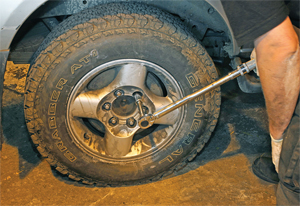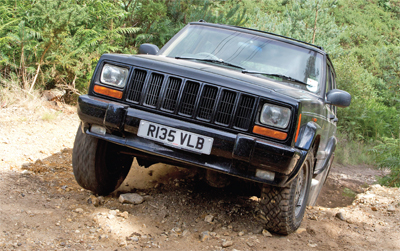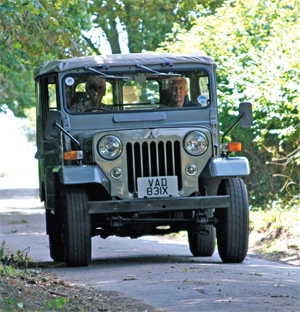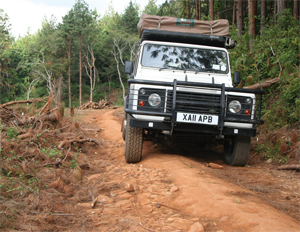 Hils Everitt – Editor at Large
Hils Everitt – Editor at Large

It’s not often I get to ride in the back seat of a car as a passenger. I do often sit in the privileged position of co-pilot and, in our long-term Subaru Forester; it is a reasonably comfortable ride. This is an SUV that hugs the bends quite well, considering its somewhat ungainly stance as a 4×4, and you don’t feel too much wallowing or juggling around.
The same cannot quite be said of riding in the back seat, however. It is billed as a five-seater, but there isn’t really enough comfort room in the back for three adults. On a recent journey to a birthday party, I was sitting with two average-sized ladies in the back, and by that I mean not overweight nor excessively tall. I was in the middle, naturally, as I have very short legs and the transmission tunnel isn’t so much of an issue for me, although there is not a lot of room as the invasive centre console bulges back into the rear. At five feet tall and a size 8, I am petite: basically, the size of a 13-year-old child, according to some clothing manufacturers. Yet, even with two slim friends, we were still a little bit cramped in the back. I could easily have got my Jeep Grand Cherokee out of the garage to give us all abundant luxurious space in the back, but I wanted to test the Forester’s credentials. Luckily, it was a late afternoon garden party, so none of us was clad in slinky and vulnerable-to-creases silk cocktail dresses. If we had been, the Jeep would have been essential.




 Hils Everitt – Editor at Large
Hils Everitt – Editor at Large
 Nigel Fryatt – editor
Nigel Fryatt – editor There it was, ahead of us. As the Freelander eased forward, at a relaxed snail-paced crawl, up the slight incline it was obvious where we were as ahead was the famous Big Sky that you find in Norfolk. There was a brisk northerly wind (something else you get in this part of Norfolk), but the sky was a pale blue, the sun was shining and we were driving one of the oldest known transport routes in the UK. It struck me then, that this is what 4×4 ownership was all about. In this weather, the route was simple, the Freelander’s wheels occasionally scrabbling on the loose chalk and flint surface in some of the ruts, but that wasn’t the point. It wasn’t technical off-roading, it was getting-away-from-it-all off-roading along a section of Peddars Way, in north Norfolk and all was well with the world.
There it was, ahead of us. As the Freelander eased forward, at a relaxed snail-paced crawl, up the slight incline it was obvious where we were as ahead was the famous Big Sky that you find in Norfolk. There was a brisk northerly wind (something else you get in this part of Norfolk), but the sky was a pale blue, the sun was shining and we were driving one of the oldest known transport routes in the UK. It struck me then, that this is what 4×4 ownership was all about. In this weather, the route was simple, the Freelander’s wheels occasionally scrabbling on the loose chalk and flint surface in some of the ruts, but that wasn’t the point. It wasn’t technical off-roading, it was getting-away-from-it-all off-roading along a section of Peddars Way, in north Norfolk and all was well with the world. There’s something somewhat ethereal about driving Mitsubishi’s cutting edge Outlander PHEV. It’s not the silence when cruising around town on its electric motors; it’s more the feeling of remoteness from the driving experience, which leaves the driver feeling rather like the captain of a ship relaying instructions for someone else to perform the required manoeuvre. Certainly the unearthly silence as the car pulls away adds to the overall effect, but it’s not the hybrid technology that drains the car of any feeling of excitement, it’s just the growing trend among most mainstream manufacturers to cosset the occupants of their cars against the harsh realities of bustling traffic by engineering the feel and feedback out of controls and switches so driving becomes more like playing a computer game, while packing in worthy but control-sapping technologies such as lane departure warnings, parking sensors and even automatic accident avoidance systems to counter the consequent loss of concentration as the driver fiddles with the multi-media touch-screen display. In the Outlander hybrid, the effect is enhanced by a transmission controlled by a computer-like joystick devoid of the positive action of a proper gear lever, the driver’s attention meanwhile being drawn from the road ahead by the large graphic dashboard display showing whether it’s the electric motors or the petrol engine or both at work, as if the driver a): needed to know, considering that the whole idea of seamless interaction of the various propulsion and battery charging modes is that it requires no input from the driver and b): couldn’t tell when the petrol engine cuts in by the added noise and vibration. There isn’t much of that, but only the most insensitive soul wouldn’t notice it.
There’s something somewhat ethereal about driving Mitsubishi’s cutting edge Outlander PHEV. It’s not the silence when cruising around town on its electric motors; it’s more the feeling of remoteness from the driving experience, which leaves the driver feeling rather like the captain of a ship relaying instructions for someone else to perform the required manoeuvre. Certainly the unearthly silence as the car pulls away adds to the overall effect, but it’s not the hybrid technology that drains the car of any feeling of excitement, it’s just the growing trend among most mainstream manufacturers to cosset the occupants of their cars against the harsh realities of bustling traffic by engineering the feel and feedback out of controls and switches so driving becomes more like playing a computer game, while packing in worthy but control-sapping technologies such as lane departure warnings, parking sensors and even automatic accident avoidance systems to counter the consequent loss of concentration as the driver fiddles with the multi-media touch-screen display. In the Outlander hybrid, the effect is enhanced by a transmission controlled by a computer-like joystick devoid of the positive action of a proper gear lever, the driver’s attention meanwhile being drawn from the road ahead by the large graphic dashboard display showing whether it’s the electric motors or the petrol engine or both at work, as if the driver a): needed to know, considering that the whole idea of seamless interaction of the various propulsion and battery charging modes is that it requires no input from the driver and b): couldn’t tell when the petrol engine cuts in by the added noise and vibration. There isn’t much of that, but only the most insensitive soul wouldn’t notice it. Words and photography: Nick Redmayne
Words and photography: Nick Redmayne Bob Cooke – contributor
Bob Cooke – contributor I watched with a certain amount of awe as Axel Seedig drove his Grand Cherokee up the narrow, steeply angled climb. It was more like a gulley than a track, with a couple of big humps and dips on the left which looked as if they’d not only get a car cross-axled, but would also tip it sideways into the steep gulley wall to the right if you weren’t very careful. Axel’s car, a well-modified off-roader (that has previously appeared in our Your 4×4 Life section), made it look easy, partly because the rear diff was locked up and partly because it didn’t look as if Axel cared one jot about smacking his truck sideways into the earth wall if it all went wrong.
I watched with a certain amount of awe as Axel Seedig drove his Grand Cherokee up the narrow, steeply angled climb. It was more like a gulley than a track, with a couple of big humps and dips on the left which looked as if they’d not only get a car cross-axled, but would also tip it sideways into the steep gulley wall to the right if you weren’t very careful. Axel’s car, a well-modified off-roader (that has previously appeared in our Your 4×4 Life section), made it look easy, partly because the rear diff was locked up and partly because it didn’t look as if Axel cared one jot about smacking his truck sideways into the earth wall if it all went wrong. The Ranger is going well. In fact, better than well, I love it. The Ranger has that rare quality these days of driving enjoyment. Most modern cars have the driver involvement engineered out of them like the taste is processed out of food. But the Ranger has that certain interest, that feel that appeals to the enthusiast in me. I can’t quite identify what it is exactly, so it must be the sum of a few parts. Certainly the steering has the right amount of feel, and it’s true the car isn’t as refined as many wagons, but that means you are more part of the car and less isolated above it all. Either way, I love driving my Ranger.
The Ranger is going well. In fact, better than well, I love it. The Ranger has that rare quality these days of driving enjoyment. Most modern cars have the driver involvement engineered out of them like the taste is processed out of food. But the Ranger has that certain interest, that feel that appeals to the enthusiast in me. I can’t quite identify what it is exactly, so it must be the sum of a few parts. Certainly the steering has the right amount of feel, and it’s true the car isn’t as refined as many wagons, but that means you are more part of the car and less isolated above it all. Either way, I love driving my Ranger.